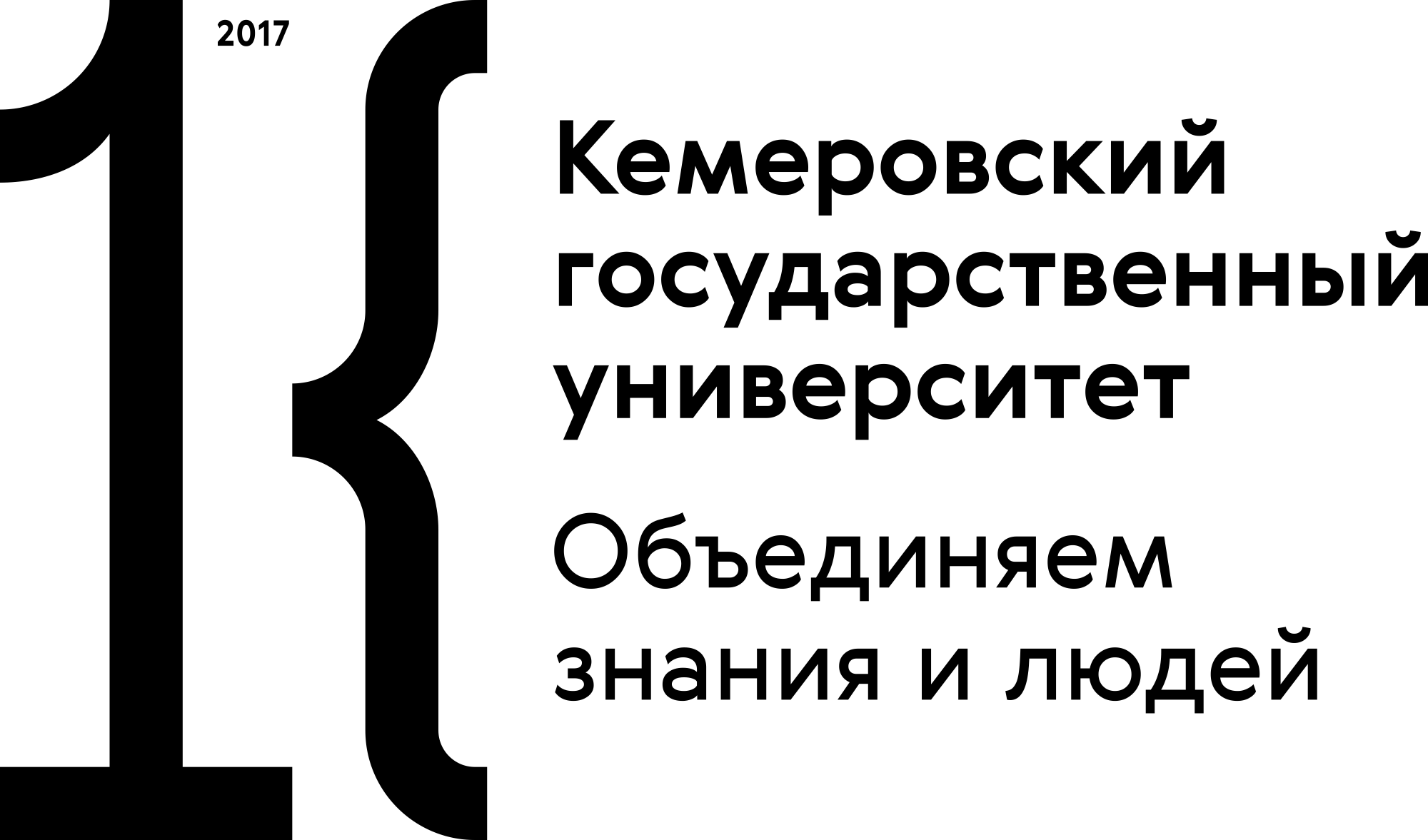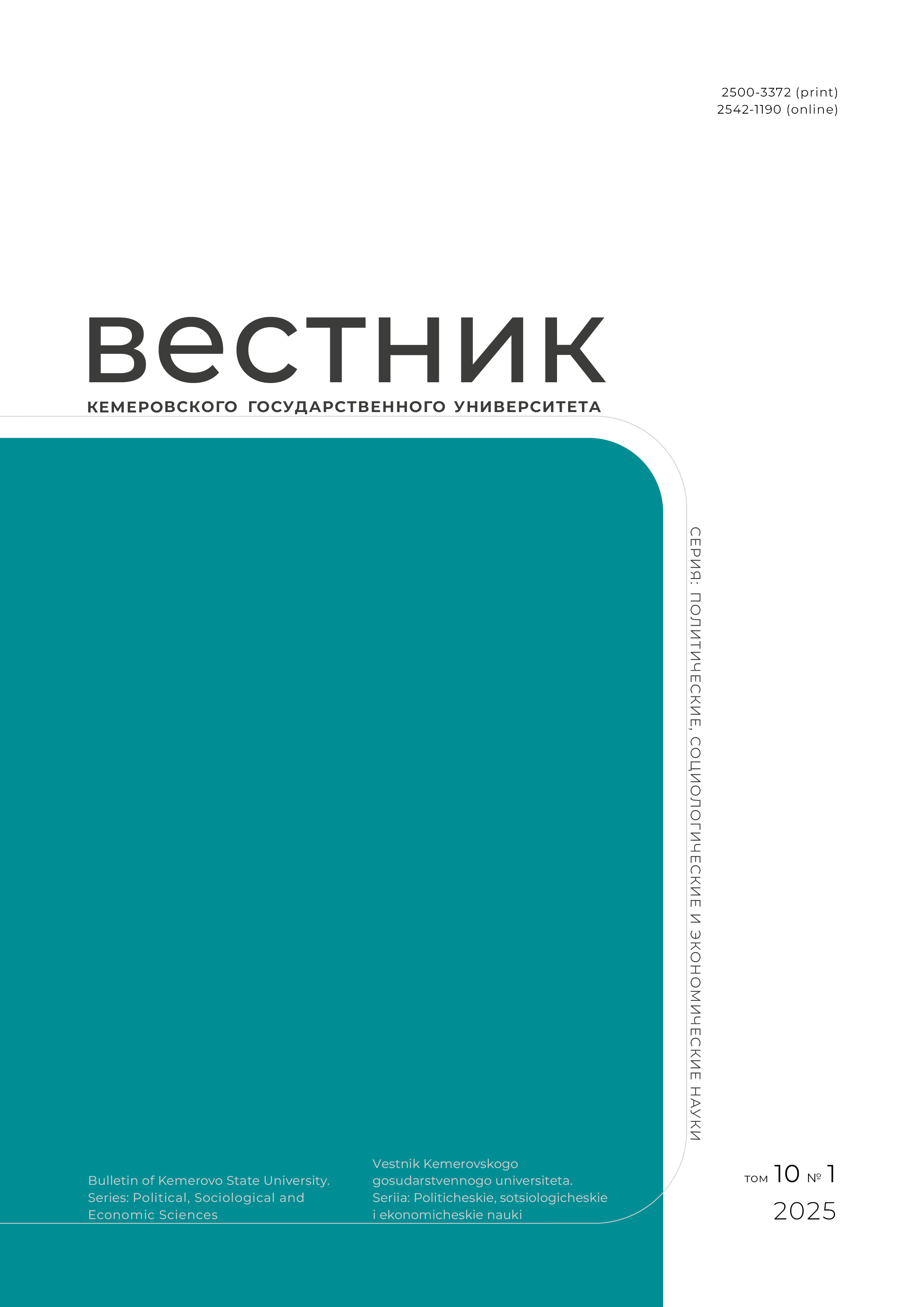Kemerovo, Russian Federation
High living standards are the strategic goal pursued by all regions of the Russian Federation. However, the overall uncertainty, insecurity, and turbulence affect the quality of life of the population. This article provides a theoretical and methodological justification of various risks that deteriorate the living standards of the regional population. The authors traced the effect of various risks on the regional quality of life to clarify the concept of risk to living standards and classified these risks. The research yielded a methodology for assessing the risks to living standards that may affect the regional population in Russia. The method was tested on the data obtained for 2012–2022 in the Kemerovo Region. Some years saw a 20% total risk level, mostly associated with environmental risks. In the early 2023, the environmental risk was as high as 92%. Other risk areas included personal safety (23.5%) as well as social and labor status (20.5%). A detailed analysis revealed some factors that could raise or reduce various types of risk in the Kemerovo Region.
living standards, risk, quality of life, living conditions, region, system of indicators, methodical approach, Kuzbass
1. Kudrov A. V., Aivazian S. A., Afanasiev M. Yu. Indicators of the main directions of development and an integral indicator of the quality of life at the regional level. Herald of CEMI, 2019, 2(1): 2–16. (In Russ.) https://doi.org/10.33276/S265838870005372-2
2. Kosinskii P. D., Povarich I. P. Managing the quality of life of the regional population on the basis of a financial and industrial group. Kemerovo: Kuzbassvuzizdat, 1999, 130. (In Russ.) https://elibrary.ru/vlvebb
3. Mikhailova M. V. Quality of life of the population as a social dominant of state and municipal policy. St. Petersburg: SPbSUE, 2020, 133. (In Russ.) https://elibrary.ru/msorno
4. Mukhacheva A. V., Morozova E. A. Quality of life in times of crisis: Regional aspect. Kemerovo: KemSU, 2016, 232. (In Russ.) https://elibrary.ru/spjazf
5. Boblakova L. M., Dmitriev V. V. Integral assessment of the quality of life of the population in St. Petersburg and Moscow. Mezhdunarodnyi zhurnal eksperimentalnogo obrazovaniia, 2014, (3): 91–95. (In Russ.)
6. Teske G. P., Radilovskaya T. Yu. Theoretical and methodological analysis of methods to study the quality of life of the population in the conditions of global digitalization. Vestnik Permskogo natsionalnogo issledovatelskogo politekhnicheskogo universiteta. Sotsialno-ekonomicheskie nauki, 2020, (4): 278–289. (In Russ.) https://doi.org/10.15593/2224-9354/2020.4.21
7. Tukhuzheva L. A., Dzhankulaev A. A. Quality and standard of living of the population. Voprosy nauki i obrazovaniia, 2018, (29): 52–54. (In Russ.)
8. Glushakova O. V. Public management of processes to ensure quality of life in socio-economic systems. Novosibirsk: Siberian Academy of Finance and Banking, 2012, 454. (In Russ.) https://elibrary.ru/qviugn
9. Income policy and the quality of life of the population, ed. Gorelov N. A. St. Petersburg: Piter, 2003, 653. (In Russ.)
10. Morozova E. A. Living standards as indicator of socio-economic development of single-industry towns. Vestnik Kemerovskogo gosudarstvennogo universiteta. Seriia: Politicheskie, sotsiologicheskie i ekonomicheskie nauki, 2018, (3): 35–41. (In Russ.) https://elibrary.ru/xncxpf
11. Bauman Z. Identity in the globalizing world. In: The individualized society, ed. Inozemtsev V. L. Moscow: Logos, 2005, 176-192. (In Russ.)
12. Giddens A. Fate, risk and security. Thesis, 1994, (5): 107–134. (In Russ.)
13. Beck U. What is globalization? Moscow: Progress-Traditsiia, 2001, 316. (In Russ.) https://elibrary.ru/raytkt
14. Pecherkina M. S., Korobkov I. V. Assessment of the risks impacting the regions’ welfare. Ekonomika regiona, 2019, 15(4): 1077–1087. (In Russ.) https://elibrary.ru/vtbxbf
15. Mayakova A. V. Analysis of sociocultural risks of modern society. Vestnik Voronezhskogo gosudarstvennogo universiteta. Seriia: Filosofiia, 2019, (3): 120–127. (In Russ.) https://elibrary.ru/laequd
16. Mukhacheva A. V., Nikitskaya E. F. Developing the region’s digital potential in managing the quality of life. Ekonomika, predprinimatelstvo i parvo, 2024, 14(3): 859–884. (In Russ.) https://doi.org/10.18334/epp.14.3.120602
17. Kazachek N. A., Zakharova E. Yu. Social risks of digital economy. Humanitarian vector, 2020, 15(4): 33–45. (In Russ.) https://doi.org/10.21209/1996-7853-2020-15-4-33-45
18. Litvintseva G. P., Shmakov A. V., Stukalenko E. A., Petrov S. P. Digital component of people’s quality of life assessment in the regions of the Russian Federation. Terra Economicus, 2019, 17(3): 107–127. (In Russ.) https://elibrary.ru/yzvaga
19. Dobrinskaya D. E., Martynenko T. S. Perspectives of the Russian information society: Digital divide levels. RUDN Journal of Sociology, 2019, 19(1): 108–120. (In Russ.) https://doi.org/10.22363/2313-2272-2019-19-1-108-120
20. Shchekotin E. V. Quality of life in a global risk society: A methodological approach. Obshchestvo. Sreda. Razvitie, 2012, (1): 167–171. (In Russ.) https://elibrary.ru/panatr
21. Zubets A. N. Russian and international approaches to quality-of-life assessment. Moscow: Financial University Under the Government of the Russian Federation, 2020, 112. (In Russ.)
22. Shchekotin Ye. V. Issue of evaluation of quality of life in conditions of unstable socium. Vestnik NSUEM, 2013, (1): 151–161. (In Russ.) https://elibrary.ru/pyciir
23. Rozhkov M. M. Risk category as safety. Criteria quality of life of the population of the Russian Federation. Ekonomika, statistika i informatika, 2014, (5): 79–83. (In Russ.) https://elibrary.ru/svurzn
24. Rusak O. N., Malayan K. R., Zanko I. G. Life safety. St. Petersburg: Lan, 2000, 448. (In Russ.) https://elibrary.ru/yrrvxr
25. Nizhegorodov E. V. Quality of life risk management analysis. Ekonomika i upravlenie kachestvom: Uchet, analiz, metody, modeli, instrumenty i audit, 2008, (5): 48–56. (In Russ.)
26. Biktimirova Z. Z. Man’s safety in region. Ekonomika regiona, 2007, (2): 187–200. (In Russ.) https://elibrary.ru/jwvtjt
27. Egorova N. M. Methodological approach to assessing the risks of the quality of life of the population in the Kemerovo Region. Development of productive forces of Kuzbass: History, modern experience, and strategy for the future: Proc. Intern. Sci.-Prac. Conf., Kemerovo, 17–23 Nov 2023. Moscow: Russian Academy of Sciences, 2024, vol. 3, 118–123. (In Russ.) https://elibrary.ru/ixrtmg
28. Kalmykova I. E. Management of socio-economic development of the region based on risk management. Cand. Econ. Sci. Diss. Abstr. Volgograd, 2011, 26. (In Russ.) https://elibrary.ru/qhhhvl
29. Buyanova M. E. Risk assessment of the social and economic development of the regions of the South of Russia (factor approach). Vestnik Volgogradskogo gosudarstvennogo universiteta. Seriia 3: Ekonomika i ekologiia, 2012, (1): 84–93. (In Russ.) https://elibrary.ru/pbkhal
30. Bezdenezhnykh T. I., Kadnichanskaya M. O., Kormanovskaya I. R. Component approach to the risks assessment of regional development (using Novgorod Region as an example). Innovatsii, 2015, (7): 99–102. (In Russ.) https://elibrary.ru/uhoyrh
31. Assessing of the socio-economic state of the region and the implementation of its development strategy, ed. Morozova E. A. Kemerovo: KemSU, 2021, 335. (In Russ.) https://elibrary.ru/wbhyef
32. Conceptual modeling of economic risk management processes based on the theory of fuzzy logic, ed. Kachalov R. M. Moscow: CEMI RAS, 2017, 113. (In Russ.)
33. Bachkai T., Messen D., Miko D. Economical risk and methods for its estimation. Moscow: Ekonomika, 1979, 184. (In Russ.)
34. Algin A. P. Facets of economic risk. Moscow: Znanie, 1991, 63. (In Russ.)
35. Rykhtikova N. A. Organizational risk analysis and management. Moscow: Forum, 2010, 240. (In Russ.) https://elibrary.ru/qsypin
36. Morozova E. A., Kotov R. M., Pastukhova E. Ya., Egorova N. M. Food risks as an indicator of the quality of life in the region. Food Processing: Techniques and Technology, 2024, 54(4): 837–847. (In Russ.) https://doi.org/10.21603/2074-9414-2024-4-2544

















